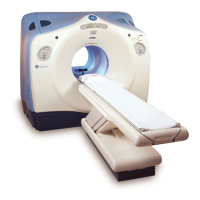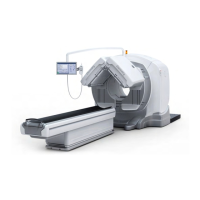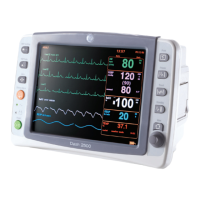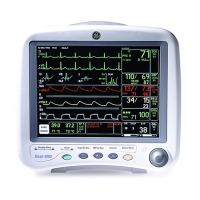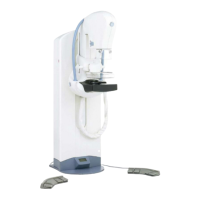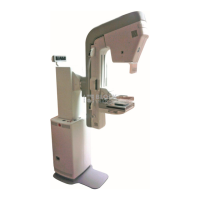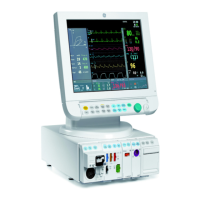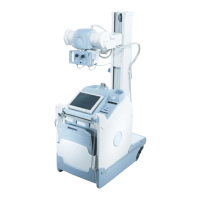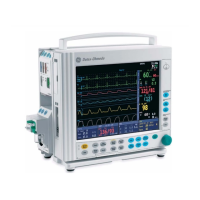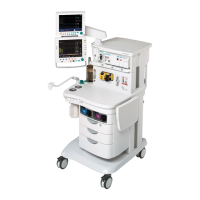5 Operating procedures
48 GE Healthcare 86500-IMG rev 3
X-ray beam should be collimated to the compressed area. This reduces
scattered radiation to the image area, so improving contrast and also
reduces the patient dose. However, the final image may be harder to read
on the viewing box due to the density difference between the exposed
area of the film (the image) and the unexposed areas of the film. The use
of a mask for reading instead of exposing full image is advisable.
Insert the cassette and compression paddle. Diamond will recognize the
paddle and use the correct collimation. Rotate the C-Arm to the required
angle for the projection to be performed. Adjust the cassette holder to a
suitable height with the vertical adjustment button.
Select the most appropriate AEC detector for the examination ensuring
that it is totally covered by the breast when under the compression
paddle. After selecting the paddle, the AEC system operates only within
the defined area. Diamond prevents the selection of an AEC detector that
is not within the area of (not under) the compression paddle in use.
Apply compression using the foot pedal or manual controls. Smooth out
any skin wrinkles that may have occurred during compression. Ensure the
patient’s head is out of the collimator light field.
Make the exposure by pressing the exposure button, and keep it pressed
until the radiation display indicator light turns off and the audible
exposure indicator stops.
WARNING!
Care must be taken not to over-compress the breast and risk injury to the
patient.
FOR TRAINING PURPOSES ONLY!
NOTE: Once downloaded, this document is UNCONTROLLED, and therefore may not be the latest revision. Always confirm revision status against a validated source (ie CDL).
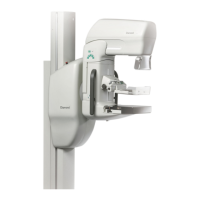
